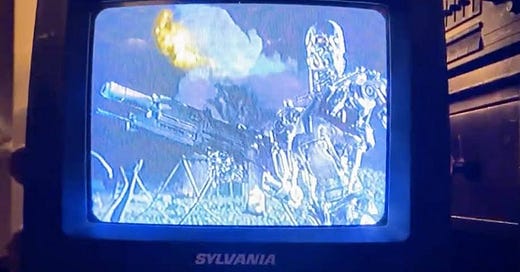I learned about the apocalypse when I was 11 from Terminator 2: Judgement Day.
My viewing of the movie corresponded with a rare occasion in our house: my mom was sick, and my dad had rented her a stack of VHS tapes to watch. Among them was the new Arnold Schwartzenegger film, which was R-rated and, as a rule, off the table for me. The poor woman: I must…




